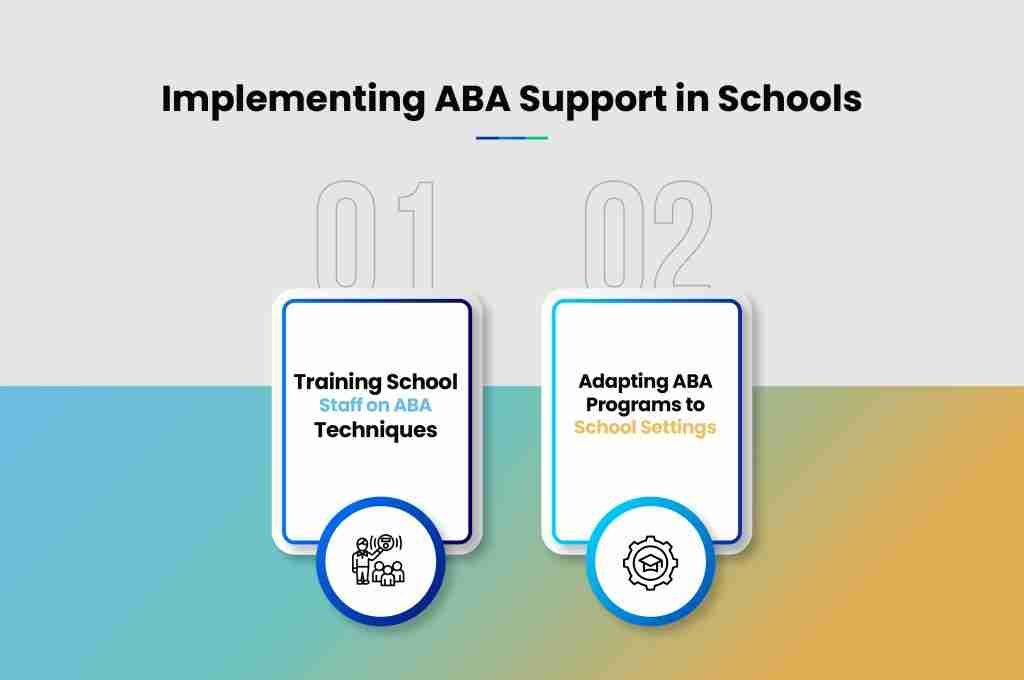Navigating School Partnerships: ABA Support Collaboration Made Simple
ABA TherapyJuly 17, 2025

Understanding ABA Support Collaboration
Teaming up with schools can work wonders for ABA therapy, making sure kids with autism get the best support possible. When both parties work together, everyone sings from the same songbook, boosting the success of ABA strategies inside school walls.
Why ABA Therapy and Schools Should Team Up
Joining forces between ABA therapy and schools is like peanut butter meeting jelly: it just works better together. Schools and ABA folks can align their game plan to create a strategy that's more than the sum of its parts. Schools act as a constant showground where ABA strategies often come into play, helping kids pick up and polish their skills no matter where they are.
This joint effort lets both the ABA squad and teachers really get to know the kid's path and different needs. By passing along observations and ideas, they can tweak strategies to match what each student truly needs. This back-and-forth gives kids a chance to practice skills learned in therapy in classes and on the playground.
What Good Partnerships Bring to the Table
When ABA specialists and schools join hands, sparks fly in a good way for kids with autism. By bundling their know-how and resources, they can come up with a plan that tackles academic, social, and behavior-related goals all at once. A well-oiled team ensures that everything fits together smoothly, giving a daily routine a jolt of consistency and making those strategies stick better.
This tag-team approach is also a learning curve for both groups. Teachers pick up ABA tricks, adding to their toolbox the ability to support skills learned during therapy. Meanwhile, ABA staff get the lowdown on what life looks like in a school building, helping them fine-tune tools and methods for different settings.
Together, the teaming of ABA experts and schools doesn't just craft better support for those with autism. It also builds a nurturing community that encourages ongoing learning and improvement. Tight-knit teamwork empowers students with autism for academic, behavioral, and social wins, setting them up for future greatness.
Establishing Effective Partnerships
When it comes to helping individuals with autism, teaming up effectively between ABA therapy providers and schools can really make a difference. Creating strong bonds requires some effort, but it boils down to keeping the lines of communication wide open and setting goals that everyone understands.
Building Communication Channels
Let's be real: communication is the name of the game. If ABA therapists, school staff, and parents aren't chatting openly, important info might slip through the cracks. Regular meetups—whether face-to-face, over the phone, or through video calls—are crucial for staying on the same page and addressing any points of confusion.
Having a go-to place for everyone to log into, like secure online portals or databases, amps up the flow of information. When everybody can check out what's happening with a few clicks, from progress reports to updates, it shifts the focus to what's important: the individual's growth. Real-time sharing means more time spent on effective support rather than chasing down data.
Creating Clear Goals and Expectations
Setting goals isn’t just about ticking boxes; it’s about creating a roadmap that fits the individual’s needs and helps everyone head in the same direction. These goals should be realistic and give a clear picture of what success looks like. It’s not just about reaching milestones, but also ensuring they are achievable and tailored for the specific student to keep everything on track.
Now, if everyone knows their job, there'll be fewer hiccups. When each person involved understands what they're responsible for, misunderstandings take a back seat. Having everyone clear on their bits ensures that trust is built, and with trust comes a smoother working relationship. We're talking true collaboration, which means individuals with autism can thrive with coordinated support.
By focusing on open lines of communication and clear objectives, ABA therapy providers and schools aren't just working together—they’re building a powerhouse team. Through teamwork and mutual respect, these partnerships are designed to give individuals with autism the support they need to succeed in a school environment.
Implementing ABA Support in Schools

When bringing ABA therapy to schools, it's crucial to make it a natural part of daily operations. This requires school staff to be well-versed in ABA methods and adjusting ABA plans to fit into the school setting without a hitch.
Training School Staff on ABA Techniques
For ABA support to truly thrive in schools, school staff need to be well-trained in ABA methods. It’s like giving them a toolbox—or maybe a Swiss Army knife—filled with knowledge about the basic ideas and practical tactics of Applied Behavior Analysis (ABA). This way, they can assist students with autism spectrum disorder (ASD) in a thoughtful and effective way.
Training Components
Description
ABA Principles
Get to know the basics: stuff like reinforcement, prompting, shaping, and chaining.
Behavior Management
Learn how to handle challenging behaviors and boost positive vibes throughout the school day.
Data Collection
Find smart ways to gather and interpret data to monitor student progress and make smart calls.
Individualized Plans
Craft and execute behavior intervention plans (BIPs) that truly cater to each student’s needs.
Collaboration
Build strong teamwork between school staff, ABA pros, and parents for consistent student backing.
When school staff have solid knowledge and grasp of ABA tactics, they're ready to step in with smart interventions, boost skill growth, and make classrooms inviting and supportive for students with ASD.
Adapting ABA Programs to School Settings
Shaping ABA programs to fit the school vibe is key for smooth ABA integration. This means modifying ABA methods and plans so they work well with the specific setting of the school.
When you tweak ABA programs for schools, keep in mind:
Considerations for Adaptation
Description
Schedule and Routine
Fit ABA sessions into the daily school timeline to keep things smooth and capitalize on learning moments.
Classroom Structure
Alter classroom layout and setup to support ABA methods and keep students interested.
Communication Channels
Set up clear lines of communication between ABA therapists, school staff, and parents for consistent student support.
Reinforcement Systems
Apply steady reinforcement strategies that jibe with the school’s behavior rules.
Individual Student Needs
Adjust ABA plans to acknowledge each student’s distinct strengths, hurdles, and goals.
Tailoring ABA programs for specific school environments and student needs allows schools to foster a team effort that champions growth and achievement for students with autism. It's a sure shot way to blend ABA therapy with school, boosting how students with ASD are supported and how well they do.
Keeping ABA Programs Running Smoothly
To keep ABA (Applied Behavior Analysis) programs effective and lasting in schools, it's important to keep an eye on how things are going and tweak strategies when needed. Supporting and training everyone involved can really help make the partnership work well.
Watching How Things Are Going and Making Adjustments
Keeping tabs on how ABA programs are performing in the school helps see what impact they're having on students with autism. This means jotting down important numbers and checking results to gauge how well the interventions are doing. By gathering and going over this data, teachers and ABA therapists can spot areas needing improvement and make smart calls to switch up strategies.
It's key to set clear guidelines and targets so everyone knows if the ABA support is hitting the mark. Looking at things like behavior shifts, school performance, and social skills can offer valuable clues about the success of the interventions. By keeping a close watch, educators and therapists can tackle issues right away and change strategies to better cater to students with autism.
Keeping Everyone in the Loop
Making sure ABA therapy and schools work well together relies on giving continued support and training to all involved—teachers, school staff, ABA therapists, and parents. Ongoing backing ensures everyone is singing from the same hymn sheet when it comes to ABA programs and working consistently with students with autism.
Training school staff on ABA ideas and techniques is a big deal for better grasping the strategies being rolled out and being able to offer steady support to students. Workshops, seminars, and professional development sessions focusing on ABA can prep teachers to set up a nurturing learning environment that caters to the individual needs of students with autism.
What's more, ongoing training keeps everyone updated on the latest in ABA therapy and the best ways to help people with autism. Encouraging a culture of nonstop learning and improvement keeps the ball rolling in ABA support, offering long-lasting perks for students.
By putting the focus on tracking progress, adjusting strategies when needed, and offering continuous support and training, schools can form a rock-solid partnership with ABA therapy. These efforts help ABA programs thrive in schools, boosting students with autism academically and personally.
